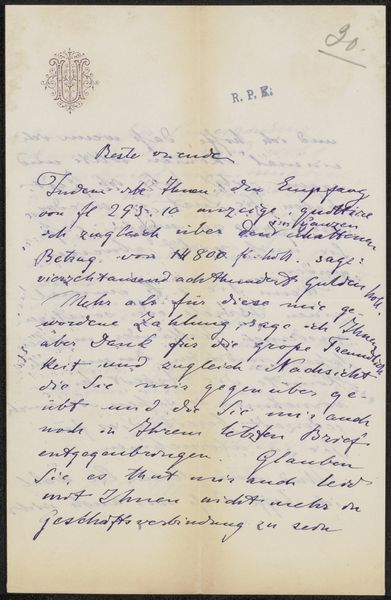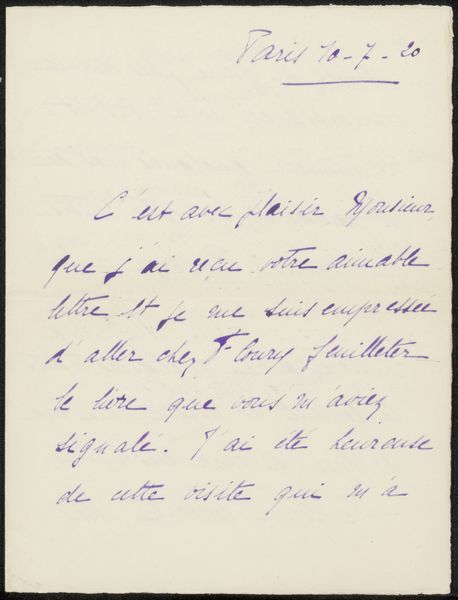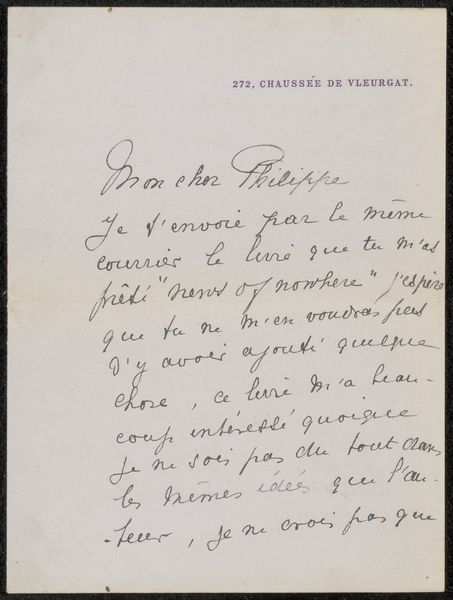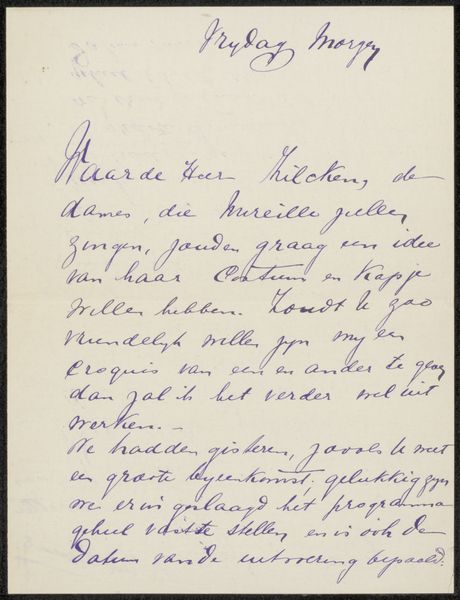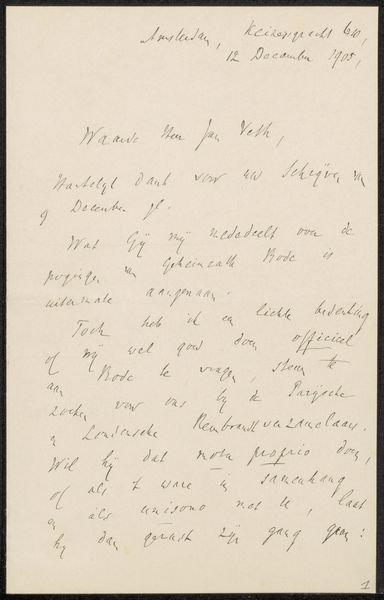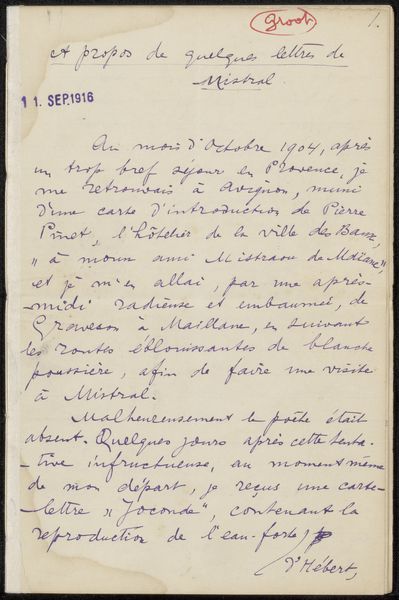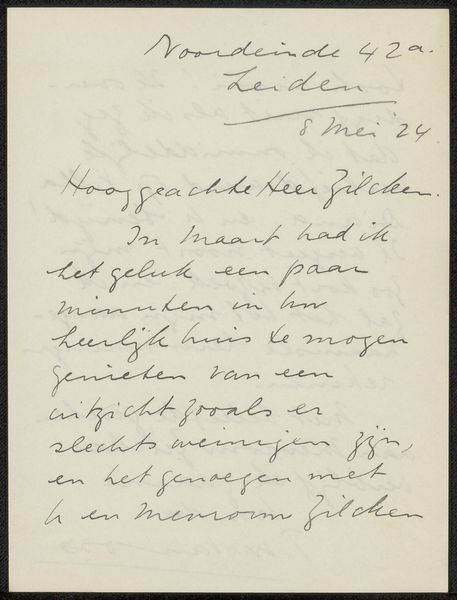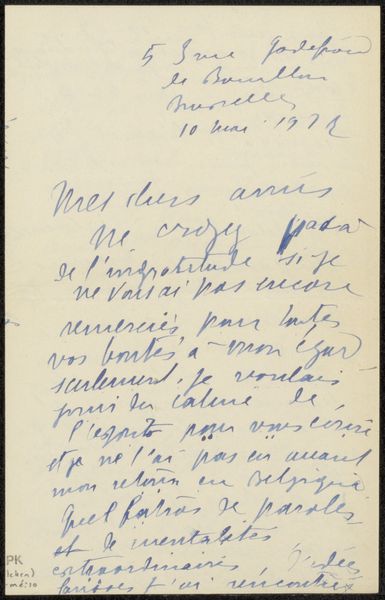
drawing, paper, ink, pen
#
drawing
#
hand-lettering
#
ink paper printed
#
hand drawn type
#
hand lettering
#
paper
#
personal sketchbook
#
ink
#
ink drawing experimentation
#
intimism
#
pen-ink sketch
#
ink colored
#
sketchbook drawing
#
pen
#
sketchbook art
#
calligraphy
Copyright: Rijks Museum: Open Domain
Curator: Here we have T. Smirnoff's "Brief aan Philip Zilcken," likely from 1927. It’s an intimate piece: ink on paper, possibly extracted from a personal sketchbook. Editor: My immediate thought is the script itself. The handwriting makes me consider penmanship as labor. This letter reflects Smirnoff's time and effort, a physical engagement with language. Curator: Exactly. It offers an interesting view of queer intimism, given the context of queer relationships and how expressions of intimacy unfolded during that period. Think about coded language or symbolic gestures—what might seem like a simple letter could actually function as a conduit for deeper, possibly hidden meanings between the author and the recipient. Editor: Interesting. But let's not overlook the practical. Letters served a fundamental purpose for networking. Smirnoff possibly nurtured professional relationships within artistic circles through correspondence. I want to know: What kind of paper did Smirnoff use? Was the ink expensive? These details tell us about available materials and Smirnoff’s economic circumstances. Curator: That’s valid, but consider the role of patronage during this time. Understanding who Philip Zilcken was and Smirnoff's relationship to him socially or professionally gives us a view into power dynamics and how they might have shaped not just the content of this letter but also the intention behind sharing it. Editor: Yes, those personal relationships informed material decisions. Understanding the quality of these things may tell us about the value Smirnoff put in Zilcken's connection, both on a personal and practical level. Curator: Agreed. Seeing this as a product of social conditions broadens our understanding. We can now use it as an access point to consider the cultural and queer experiences of the time, reflecting ideas, desires, or perhaps resistance against restrictive social norms. Editor: The ink, the paper, the act of physically writing – it’s all evidence of labor and an offering within that context. Seeing it as that also brings me to reflect about modern means of artistic networking today. Curator: Ultimately, viewing "Brief aan Philip Zilcken" as a cultural object reflecting intimacy and social agency allows a richer understanding of Smirnoff's creative process and broader socio-political setting. Editor: Precisely!
Comments
No comments
Be the first to comment and join the conversation on the ultimate creative platform.
